DREAM WEAVES OF INDIA
Everyone says Paris is the fashion capital of the world. Or perhaps Milan is. Rome is. But if you ask us Indian women, we will say, India is the FABRIC CAPITAL OF THE WORLD. WEAVE CAPITAL OF THE WORLD. India may also be the ETHNIC HANDBLOCK PRINT CAPITAL OF THE WORLD. AND EVEN THE HOSIERY CAPITAL OF THE WORLD IN SPITE OF CHINA. No other nation on earth boasts of such a stunning range of fabrics and weaves of silks, cottons and blends (natural yarn) and none has the kind of Ethnic handblock prints and handcraft work that India has – hundreds or perhaps thousands of them strewn together right across the length and breadth of the nation sewing up a beautiful enchanting and magic carpet of colourful dreams. Handlooms still occupy a place of pride over mechanized textiles like rayon and polyester, the synthetic fabrics from the west. Indian cotton and silk BREATHE and are natural fiber. I love India for Her myriad colours, earthy native fabrics, weaves, ethnic motifs and traditional handblock prints and handwork as much as I love Her for Her ancient culture and heritage. INDIAN TEXTILES REFLECT OUR ORIGINAL CHARACTER AND INDIVIDUALITY. An open challenge to anyone to prove me wrong: come up with an equivalent exquisite fabric/print/handwork collection. Understanding the fabric of India may help one understand the very phenomenon and enigma called India.
Around the world Indians are going places as CEOs of multinational corporations, astronauts, medicos, scientists, mathematicians, engineers, teachers, nurses, techies… but if you look at the way we lovingly weave and wear, you will know why we Indians are able to make it good anywhere. Where does the inspiration spring from? Here is a peek into India’s Soul.
Pictures courtesy (!): Google Images
PART I : FABRICS AND WEAVES/THREADS OF INDIA
I confess to bad taste in clothes, wrong accessorizing and mismatch of colours so I must be the last person to attempt something like this. Still I wanted to document the varied, diverse fabrics of India as much (as I could recall) with their unique local dyes/hues and ethnic motifs. The kind of fabrics we have here in India is matchless, the desi cotton is our trademark. To others, clothes are matter-of-fact. Not for us Indian women. Every suit or kurtha/kurthi or top or a sari or even a salwar or pant an Indian Nari dons has a background woven into its history, with specific intricate details. Even in foreign labels like Marks & Spencer etc. abroad, we find the fabric happens to be basically Indian with finishing (tailoring) done in UK. Same may be true of Italian clothes as well. Chinese cotton is smoother than Indian with a clean machine finish: something that Indian fabrics may lack but that is exactly our plus point. Chinese cotton to me is one more industrial product. Never applies to my senses. Our desi pure cottons and cotton blends are coarser. Bangladeshi (Bengali) cotton could be the closest match. I also love the Pakistani lawn (as they call cotton) but I am not for their crowded patterns/designs. The fabric is super fine and flowy. The Pakistanis do not simply have the stunning range of fabrics that India presents to the world. So these are the four countries that dominate the world cotton and fabric market today.
Here I set about exploring what little I know from the fabric world. State-wise if possible.
TAMIL NADU: KANJIVARAM SILKS, ARNI SILKS, DHARMAVARAM SILKS, CHINNALAPATTU, COIMBATORE COTTON, CHETTINAD COTTON, SILK COTTON, MADURAI SUNGUDI, MADRAS CHECKS (COTTON SHIRTS)
KANJIVRAM, THE QUEEN OF WORLD FABRICS IS FROM KANCHIPURAM, NEAR CHENNAI, TAMIL NADU, INDIA. PREMIUM & NO. 1 SILK IN WORLD
KANJIVARAM, THE PRIDE OF INDIA
Let me start with Tamil Nadu, famous for its Kanjivaram silks (aka Kanchipuram or Kanchi), Arani silks (second grade), Chinnalapattu, Dharmavaram. These are just the silk varieties from my home base. Cottons include Chettinad and Coimbatore and Madurai. Wedding silk cannot be less than Kanjivaram silks for south Indian brides. Prices may range anywhere between 2,000 rupees to lakhs of rupees.
You have to be real rich if you want to stitch a suit in Kanjivaram silks. I do that once my silk sari ages. . For all special occasions and family weddings, silk is a must for us.
For paucity of space, I am leaving out the other silk varieties from Tamil Nad. Kanjivaram is most sought after through out the world. (In any case this is going to be one very long post). There are tourists who visit Chennai for the sole purpose of shopping for silk.
Silk and Cotton make an interesting blend in various ratios. That gives rise to hundreds of different cotton-silk tissues that are every woman’s delight. Jute Silk, Raw Silk, Silk Cotton are hot favourites.
So here I have merely covered the silk and silk-cotton blends from my home state sans any handwork like embroidery or mirror or bead work. Also leaving out dyeing works like tie-and-dye, Kalamkari like fabric paints, block prints etc that I shall try to cover under ‘Prints of India’ (part II). My first section to deal with only fabrics.
HOSIERY INDUSTRY OF TAMIL NADU: TIRUPUR
India (Tamil Nadu) may be the world suppliers of Jockey to Victoria’s Secret and other global brands when it comes to underwear. You may go for premium inners from Australia to America but remember all of them come from Tirupur textile units. Mostly. Only you end up paying 10 times more in the west for the under garments made in India.
INDIA ALSO COULD SHORTLY CLAIM TO BE THE DENIM CAPITAL OF THE WORLD INCHING PAST BANGLADESH SINCE THE ERA OF EXPORT TRADE TARIFF BENEFITS EXTENDED TO DENIM MANUFACTURE IN BANGLADESH AND PAKISTAN DRAW TO A CLOSE. I AM LEAVING OUT DENIM FROM THIS POST OWING TO LACK OF SPACE.
ANDHRA PRADESH: SEEMANDHRA & TELENGANA : UPPADA SILK, POCHAMPALLY, MANGALAGIRI
KARNATAKA: MYSORE CREPE SILK
Next Karnataka famous for its soft Mysore silk Crepe. As the name suggests, it is the only synthetic mix among the sea of pure silks and cottons otherwise you find in India.
KERALA: KASAVU
Kerala bride has to marry only in Kasavu sari whatever be her economic status. In all special occasions/muhurats, women in Kerala dress up only in off-white.
GOOOAAA !!! MELTING POT OF MANY AN ETHNIC HANDBLOCK PRINT AND FABRIC FROM ALL CORNERS OF INDIA
Haven’t heard of anything such as Goan fabric. Rest of India fabrics get a new style in Goa to suit the tastes of visiting foreign tourists.
MAHARASHTRA: PUNE COTTON, PAITHANI SILK
Maharashtra is famous for its Pune cotton. It is a very refined cotton compared to South Cotton.
MADHYA PRADESH: CHANDERI
Chanderi silk and cotton are from Madhya Pradesh. Very popular with Indian women. A unique fabric going with a matching local ethnic print.
UTTAR PRADESH: BENARASI (Of course!)
Just as a south Indian bride may not marry in anything other than the coveted Kanjivaram, a north Indian bride may not marry in anything less than Benarasi.
Benarasi silks and cottons from Uttar Pradesh
BIHAR: BHAGALPURI AND TUSSAR
Note: Tussar silk is also weaved in Bengal.
Bhagalpuri from Bihar, next. Tussar is another unbeatable Bihar’s specialty. I have to confess, of all silk weaves, Tussar is my No.1 favourite. Tussar silk with hand embroidery is my favourite.
ORISSA: SAMBALPUR, BOMBKAI
Oriyan Sambalpuri is something I haven’t collected so far. Pending.
RAJASTHAN: KOTA & JAIPUR COTTON, BANDHEJ (BANDHANI)
Jaipur kurthis are most affordable, very reasonably priced, with hand prints (like block prints). Very popular with Indian teenagers. Kota saris are most preferred cotton saris for working women.
GUJARAT: SURAT COTTON & KHADI , BANDHEJ (BANDHANI)
BENGAL : BENGAL COTTON & TUSSAR SILK AND COTTON , JUTE COTTON & SILK, BALUCHARI SILK
In my working days I mostly draped a Bengal cotton sari at least once a fortnight to office. Favourite with working women. Bengal cotton suits, again a favourite. As I have covered Tussar under Bihar and Jute under silks of Tamil Nadu, I am giving them a miss here.
KASHMIR: KASHMIR SILK, MATKA SILK, PASHMINA & CASHMERE WOOLEN AND RUGS AND CARPETS
ASSAM: MUGA SILK & TUSSAR SILK
PUNJAB : KNIT WEAR & SPORTS GEAR, PUNJABI COTTON
PART II: ETHNIC HANDBLOCK PRINTS & MOTIFS
AND NATURAL DYES OF INDIA
DABU PRINT FROM RAJASTAN / HAND BLOCK PRINT
Dabu print Kurthis are very popular with women. Handblock bed linen from India equally popular in fashion houses around the world, priced exorbitant.
PHULKARI FROM PUNJAB
KOLHAPURI JUTIS FROM MAHARASHTRA
JODHPURS FROM RAJASTAN
Kolhapuri Handmade Leather Jutis (Footwear) for Men & Women from Kohlapur, Maharashtra, one more Made-in-India produce that is world famous designer collection. Jodhurs from Rajastan originally need no introduction.
AJRAKH PRINTS, KUTCH, GUJARAT
BANDHANI PRINT FROM RAJASTAN, GUJARAT, KASHMIR
TIE & DYE
BATIK
If Kanjivaram and Tussar are my silk favourites, Bandhini is my No.1 favourite hand print. I have Bandhani in everything: silk, cotton, georgette-crepe be it sari or kurti or stole.
KUTCHI MIRROR EMBROIDERY (MUTWA) FROM GUJARAT
APPLIQUE WORK (PATCH WORK) FROM ODISHA (ORISSA)
BAGRU PRINTS FROM RAJASTAN (JAIPUR)
Bagru is one more hand block print very popular with women.
LUCKNOWI CHIKANKARI FROM UTTAR PRADESH
This is another addiction of mine.
IKAT PRINTS FROM ANDHRA, ORISSA, GOA AND OTHER STATES OF INDIA
IKAT TRIBAL PRINTS & MOTIFS
Many states in India weave Ikat in different local fabrics like silks and cotton. Ikat is very much in fashion everywhere. Some Ikat prints here.
KALAMKARI FABRIC PAINT FROM ANDHRA PRADESH: SEEMANDHRA/TELENGANA
NO other Ethnic work is as contemporary now as Kalamkari (and Ikat).
MADHUBANI FABRIC PAINTING FROM RAJASTAN, MAHARASHTRA & OTHER STATES
KHARI PRINT FROM VARIOUS STATES
MADRAS CHECKS FROM TAMIL NADU
One more World standard from Madras, Chennai. Next time you wear a checkered shirt, remember, it is named after Madras from its famous ‘Lungi’ check designs. If Kanjivaram is for women, Madras checks are for men. GET INSPIRED. WEAR MADRAS ON YOUR SLEEVE WITH MADRAS CHECKS!
SUNGUDI FROM TAMIL NADU
Sungudi is soft cotton from Tamil Nadu and Sungudi dying is unique and favourite especially among senior citizens. My granny always draped only a Sungudi cotton sari with sungudi dyed prints. Brings back loving memories of her. I do have sungudi kameezes, softest as they come.
ZARDOSI/ZARI WORKS ACROSS INDIA
Zardosi works in North Benarasis and Gold/Silver Zari borders in South Kanjivarams:
GOTA PATTI FROM RAJASTAN
KANTHA & JAMDANI WORKS FROM BENGAL
…….
and on and on and on……..,
There is much more. Suggestions/Corrections/Improvements welcome. Would like to add to this collection of mine 😀
But before I stop, want to add this: Some cotton varieties from India may need regular starching. Some silks may need dry cleaning. Following the wash instructions is very important when it comes to fabrics/clothes from India with/without ethnic hand work. Not only the weaves, even the dyes could be delicate. Exercise caution for wash.
What a stunning range of fabrics and weaves we have in India: from feather weight muslins to class Kanjivaram pure silks to roughly hewn Khadi cottons. A staggering array of dyes mostly natural/vegetable. Put together the desi flavour of ethnic motifs of each district from every state: and work out the permutations and combinations. There you go! And I have not even covered a fraction of the ocean called Indian Textiles world. This is just the natural fabrics. There is the other world of synthetics like Georgette, Crepes, Polyester, Nylon, Rayon, (Denim) etc., etc., that I do not even want to attempt…
So that can give you an idea about India. It is not about mere fabrics. It is not about just dyes and ethnic prints and motifs. It is much more than all that. None can summarize India. I am trying my bit that’s all. May be I have managed some 0.001%.
I do not want to comment on others but I find Chinese materials very inferior and artificial and cold and classless and without a character. Plain. But very, very flexible. That I have to give to the chinese: for marketing themselves best and for catering to every taste and for being most flexible and economical. Well, Indians cannot afford to be like that. India is too complex if this post of mine is any indication.
As for Pakistan lawn, I like the fabric but I find it very plain and uninspiring. Designers and designs are similar and predictable. No individuality. Cotton on the other side of Punjab is surprisingly soft (or probably imported) compared to the cotton that grows on this side of the Atari border. Pak lawn makers mix at least 10% of synthetic yarn with their cotton. 100% virgin cotton is hard to come by. No special weaves or patent-worthy content like we have in India.
I guess most Indian desi original pedigree fabrics/weaves/threads/textiles/handblock prints are now patent protected, with Geo-Patent. For instance Kanjivaram silk saris from Kanchipuram, near Chennai.
Even our clothes should have a character. At least that is what I believe in.
As for Europe and America, they import fabric from India and China (also Bangladesh, Pakistan) and do the finishing (tailoring), customizing them to their regional tastes. Just as India is the back office of the world when it comes to the IT industry, India is also behind the fashion scene of the world very much although you may never guess…


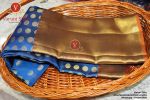

































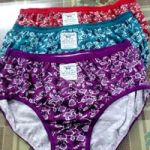


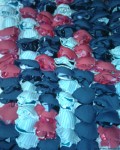



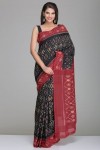







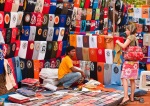


























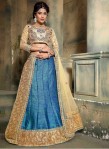





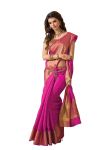
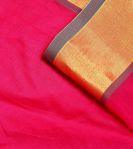







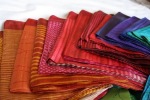











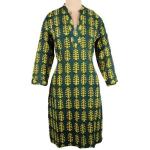








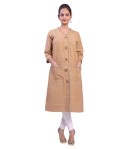





















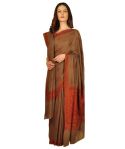

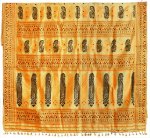
















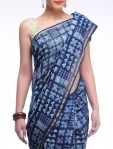







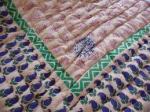






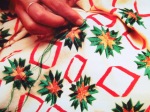



























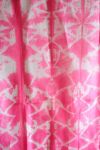


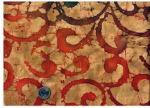














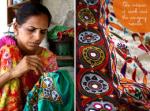
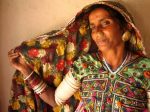


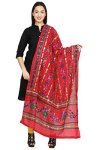




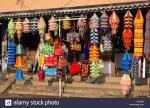



















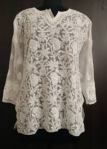














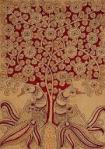
















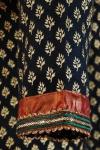















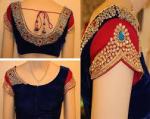






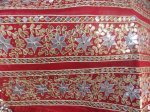
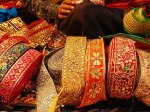








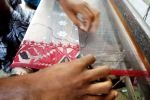




Wow… waiting for the next edition… Thanks for the treat…
LikeLiked by 1 person
Thanks Mangai!
LikeLike
Detailed. Very good write up.
LikeLike
Thanks di 😀
LikeLike
Excellent. Very good write up.
LikeLiked by 1 person
Wow!!! Beautiful write up Viji. So many varities. Proud to be an Indian.
LikeLiked by 1 person
Thank you Roopa!
LikeLike
Simply superb Viji.
LikeLiked by 1 person
Thanks Vidya!
LikeLike
I often visit your website and have noticed that you don’t
update it often. More frequent updates will give your website higher
rank & authority in google. I know that writing articles takes a lot of time, but you can always help yourself with miftolo’s tools which will shorten the time of creating an article to a few
seconds.
LikeLike